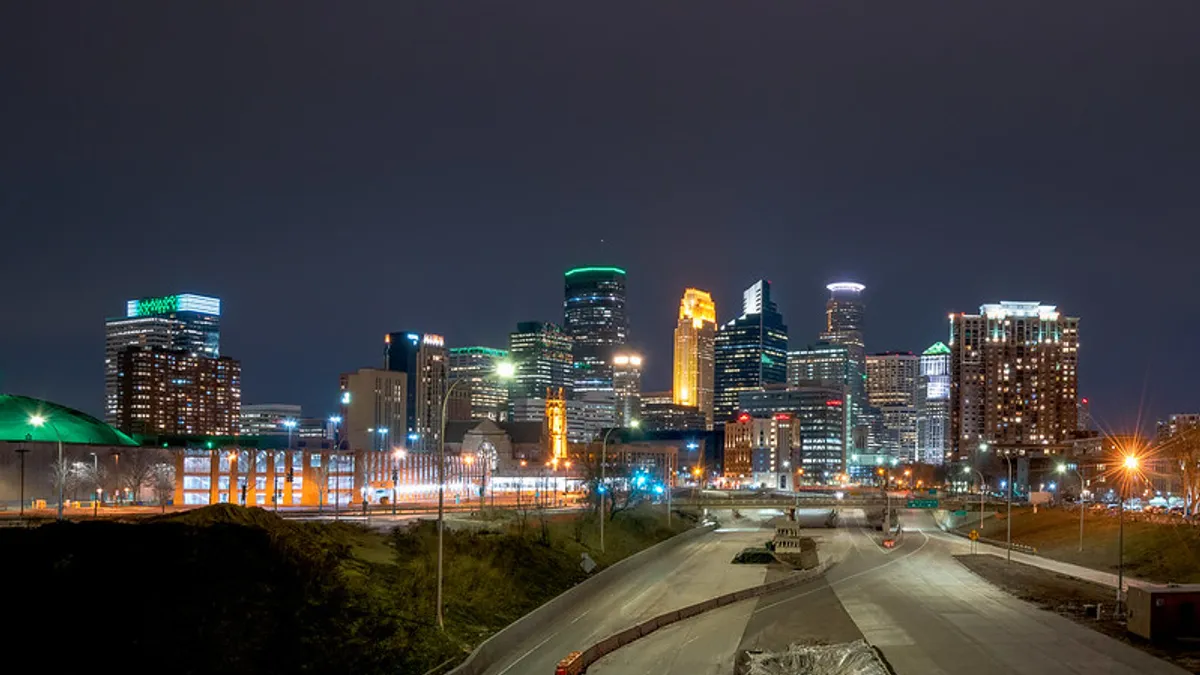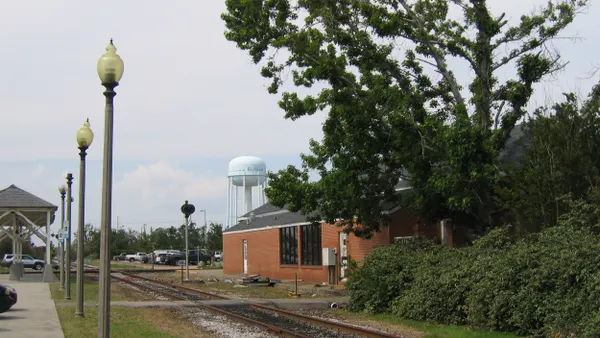Dive Brief:
- Congestion fell almost 50% across major U.S. cities in 2020, sparing the country's drivers nearly 75 hours compared to 2019. As a nation, drivers saved over 3.4 billion hours, valued at $51 billion in time savings compared to 2019, according to the annual global traffic scorecard report by transportation analytics company INRIX.
- New York, Philadelphia and Chicago topped the list of U.S. cities with the most time lost due to congestion. And Bogotá, Colombia, topped the global list for the second year in a row.
- Downtown traffic volumes also saw dramatic decreases, dropping an average of 44% amid the pandemic. However, drivers increased their speeds in downtown areas by up to 42%, according to the report.
Dive Insight:
From 2017 to 2019, the average time lost by U.S. drivers had increased two hours amid economic and urban growth, according to previous INRIX reports. But 2020 ushered in a year of tumultuous, unexpected changes to those traffic patterns.
"In the transportation world, they used to say that obviously pricing is one way to reduce congestion and the other was a recession because we did see some travel times get reduced during the Great Recession," said Bob Pishue, a transportation analyst at INRIX. "And apparently now we know that pandemics [reduce congestion] as well."
Today, certain localities might even prefer to have some of their congestion back to pre-pandemic levels, as traffic can be a reflection of the health of the local economy, according to Pishue.
Boston had topped INRIX's global scorecard for the past two years, but the city's ranking dropped to the fourth-most congested U.S. city in this year's report. And Washington, DC saw the biggest change in congestion, with delays falling 77% compared to 2019.
Portland, OR also experienced the biggest decline in trips to the city's downtown at 66%, followed by San Francisco (-64%), Washington, DC (-60%) and Detroit (-59%).
Traffic delays throughout the country's busiest corridors also decreased compared to 2019. Chicago's Eisenhower Expressway, which topped the list of the most congested roads in the U.S., had 41 hours of delays in 2020, compared to 56 hours in 2019.
Looking ahead, many questions remain about the future of congestion and traffic patterns as more people are vaccinated and cities work to restore their economies. The ultimate question is whether local leaders will see demand for trips increase to pre-pandemic levels, particularly as trends like telecommuting continue to take hold, according to Pishue.
Previous tactics for curbing traffic like congestion pricing that have been explored in New York City, Seattle and elsewhere could also be upended by the pandemic, as the revenue raised may now be unreliable, according to Pishue.
The increase in travel speeds across downtowns has also become a concerning trend for safety advocates and local leaders. In fact, fatalities from motor vehicles in the U.S. reached its highest point in 2020 since 2007, according to recent data released by the National Safety Council. The group recorded an 8% increase in deaths last year despite a 13% decrease in vehicle miles drive due to the pandemic.
The death rate from crashes also increased 24% compared to 2019, the biggest year-on-year increase since 1924. Washington, DC, for example, saw a 33% increase in the number of deaths recorded last year. The city also reduced its speed limits on the majority of local streets to 20 miles per hour this summer in an attempt to reduce pedestrian fatalities.
Some safety advocates are also evaluating if technology can play a bigger role in reducing fatalities. And the Governors Highway Safety Association, the Insurance Institute for Highway Safety and the National Road Safety Foundation announced last week they would jointly provide $100,000 to Maryland and Virginia for each state to develop speed management pilot programs.











